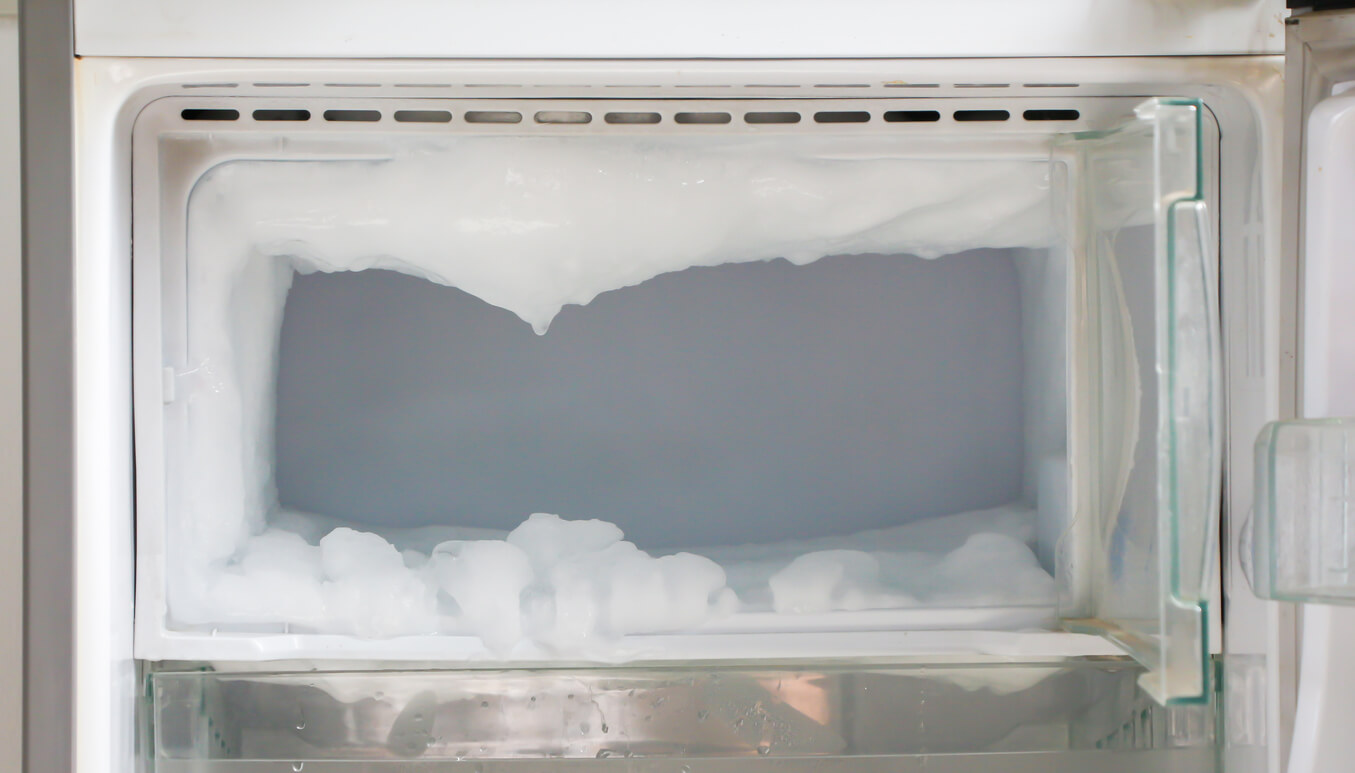Maximize Your Refrigerator Space and Simplify Your Daily Life

Picture this: It’s a hectic morning, the clock strikes 7:30 a.m., and the race against time has already begun. As you’re trying to prepare breakfast, pack lunchboxes, and make sure everyone has what they need, you open the refrigerator in search of a key ingredient and find that the space is a disorganized chaos that prevents you from finding it quickly.
A cluttered kitchen can be the epicenter of stress in everyday life. Therefore, maximizing the space in your fridge isn’t only a matter of efficiency but also has important practical and functional benefits to simplify the day-to-day life of a busy mom. Here are some strategies to make the most of your fridge and optimize the space available.
Continue reading: How to Prevent Food Poisoning During Summer
There’s nothing like opening your home refrigerator and quickly finding all the foods you need to prepare your kids’ meals. But if your fruits and vegetables are hiding behind unlabeled containers, your dairy products are getting lost on crowded shelves, and frozen meat is getting frosty, it’s time to do something about it.
From using containers to preserve food freshness to learning how to defrost a freezer to prevent frost buildup, the following tips will help you get the most out of your refrigerator:
1. Organize your food by categories

Besides being a question of order, organizing food in the refrigerator can help you avoid cross-contamination in the midst of the daily rush. It also allows you to maintain better visibility of available foods, which makes meal planning easier and prevents the loss of forgotten items at the bottom of the fridge.
This is one way you can categorize your food.
In the fridge:
- Dairy and eggs: Assign a specific area to store milk, yogurt, cheese, and eggs.
- Fruits and vegetables: Reserve one drawer for fruits and another for vegetables to prevent the former from accelerating the ripening process of the latter.
- Condiments and sauces: Use the compartments in the door to store sauces, dressings, jams, and condiments.
- Canned goods: Use another shelf or space in the door to store bottles of water, juices, and other packaged foods.
In the freezer
- Meat and fish: Dedicate a specific area for storing frozen meat and poultry, such as chicken fillets, beef steaks, fish, and other meat products.
- Vegetables and fruits: Reserve a space to store bags or containers of frozen vegetables and fruits. Be sure to label them with the date you pack them.
- Breast milk: If you’re a nursing mother, according to the American Academy of Pediatrics, breast milk can be kept frozen for up to 9 months if you have a refrigerator with a freezer (0°F or -18°C). Just try to store it at the bottom of the freezer.
- Ice cream and desserts: Set aside an accessible space for ice cream, frozen desserts, and baked goods in airtight bags.
You might be interested in: How to Store Breast Milk: What You Should Know
2. Take advantage of less-used spaces

When it comes to maximizing space in your refrigerator, it’s essential to identify and take advantage of lesser-used nooks and crannies to optimize food storage. This can include areas at the back of shelves, the sides of drawers, and areas near door hinges.
To make the most of these spaces, consider using additional organizers, such as baskets, pull-out shelves, or stackable garbage cans. These accessories won’t only help you keep food organized and visible but also prevent it from getting lost in forgotten corners of the fridge.
3. Pay attention to expiration dates
According to information from the Centers for Disease Control and Prevention (CDC), anyone can get food poisoning. However, children under five years old and adults over 65 years old are at higher risk of getting sick. Therefore, checking the expiration date of the food you consume and give to your children is of vital importance.
According to information from the CDC, to keep food in good condition and avoid food poisoning, refrigerator temperatures should be kept below 40°F (4°C). In addition, it’s important to regularly check your refrigerator to identify and discard products that have expired or are close to expiring.
4. Defrost your freezer from time to time

Although many refrigerators today have features that prevent frost buildup, frost is still very common in those manufactured more than a decade ago. A problem that prevents food from freezing efficiently and increases energy bills.
So, if you notice that your freezer has a layer of ice of more than half a centimeter, it’s time to defrost it completely. Here’s a basic guide to do it correctly.
- Empty the freezer and the entire refrigerator.
- Unplug and wait patiently.
- Let the ice melt or speed up the process with towels soaked in hot water or with special products.
- Collect the water inside the refrigerator.
- Clean the inside with a vinegar and water solution.
- Completely dry the refrigerator and freezer.
- Plug it in and wait for it to reach the right temperature.
- Put the food back in once it’s clean and dry.
In most cases, defrosting the freezer twice a year is more than enough. Remember that 3 millimeters of frost on the walls of your freezer can increase energy consumption by 30%.
See more: 7 Money-Saving Tips for Large Families
Follow these tips to maximize your refrigerator space
Keeping a well-organized fridge and freezer helps you save time, money, and effort in meal preparation, avoiding food waste and ensuring a healthy diet for you and your family. So, don’t wait any longer; put these strategies into practice and simplify your daily life as a mom!
Picture this: It’s a hectic morning, the clock strikes 7:30 a.m., and the race against time has already begun. As you’re trying to prepare breakfast, pack lunchboxes, and make sure everyone has what they need, you open the refrigerator in search of a key ingredient and find that the space is a disorganized chaos that prevents you from finding it quickly.
A cluttered kitchen can be the epicenter of stress in everyday life. Therefore, maximizing the space in your fridge isn’t only a matter of efficiency but also has important practical and functional benefits to simplify the day-to-day life of a busy mom. Here are some strategies to make the most of your fridge and optimize the space available.
Continue reading: How to Prevent Food Poisoning During Summer
There’s nothing like opening your home refrigerator and quickly finding all the foods you need to prepare your kids’ meals. But if your fruits and vegetables are hiding behind unlabeled containers, your dairy products are getting lost on crowded shelves, and frozen meat is getting frosty, it’s time to do something about it.
From using containers to preserve food freshness to learning how to defrost a freezer to prevent frost buildup, the following tips will help you get the most out of your refrigerator:
1. Organize your food by categories

Besides being a question of order, organizing food in the refrigerator can help you avoid cross-contamination in the midst of the daily rush. It also allows you to maintain better visibility of available foods, which makes meal planning easier and prevents the loss of forgotten items at the bottom of the fridge.
This is one way you can categorize your food.
In the fridge:
- Dairy and eggs: Assign a specific area to store milk, yogurt, cheese, and eggs.
- Fruits and vegetables: Reserve one drawer for fruits and another for vegetables to prevent the former from accelerating the ripening process of the latter.
- Condiments and sauces: Use the compartments in the door to store sauces, dressings, jams, and condiments.
- Canned goods: Use another shelf or space in the door to store bottles of water, juices, and other packaged foods.
In the freezer
- Meat and fish: Dedicate a specific area for storing frozen meat and poultry, such as chicken fillets, beef steaks, fish, and other meat products.
- Vegetables and fruits: Reserve a space to store bags or containers of frozen vegetables and fruits. Be sure to label them with the date you pack them.
- Breast milk: If you’re a nursing mother, according to the American Academy of Pediatrics, breast milk can be kept frozen for up to 9 months if you have a refrigerator with a freezer (0°F or -18°C). Just try to store it at the bottom of the freezer.
- Ice cream and desserts: Set aside an accessible space for ice cream, frozen desserts, and baked goods in airtight bags.
You might be interested in: How to Store Breast Milk: What You Should Know
2. Take advantage of less-used spaces

When it comes to maximizing space in your refrigerator, it’s essential to identify and take advantage of lesser-used nooks and crannies to optimize food storage. This can include areas at the back of shelves, the sides of drawers, and areas near door hinges.
To make the most of these spaces, consider using additional organizers, such as baskets, pull-out shelves, or stackable garbage cans. These accessories won’t only help you keep food organized and visible but also prevent it from getting lost in forgotten corners of the fridge.
3. Pay attention to expiration dates
According to information from the Centers for Disease Control and Prevention (CDC), anyone can get food poisoning. However, children under five years old and adults over 65 years old are at higher risk of getting sick. Therefore, checking the expiration date of the food you consume and give to your children is of vital importance.
According to information from the CDC, to keep food in good condition and avoid food poisoning, refrigerator temperatures should be kept below 40°F (4°C). In addition, it’s important to regularly check your refrigerator to identify and discard products that have expired or are close to expiring.
4. Defrost your freezer from time to time

Although many refrigerators today have features that prevent frost buildup, frost is still very common in those manufactured more than a decade ago. A problem that prevents food from freezing efficiently and increases energy bills.
So, if you notice that your freezer has a layer of ice of more than half a centimeter, it’s time to defrost it completely. Here’s a basic guide to do it correctly.
- Empty the freezer and the entire refrigerator.
- Unplug and wait patiently.
- Let the ice melt or speed up the process with towels soaked in hot water or with special products.
- Collect the water inside the refrigerator.
- Clean the inside with a vinegar and water solution.
- Completely dry the refrigerator and freezer.
- Plug it in and wait for it to reach the right temperature.
- Put the food back in once it’s clean and dry.
In most cases, defrosting the freezer twice a year is more than enough. Remember that 3 millimeters of frost on the walls of your freezer can increase energy consumption by 30%.
See more: 7 Money-Saving Tips for Large Families
Follow these tips to maximize your refrigerator space
Keeping a well-organized fridge and freezer helps you save time, money, and effort in meal preparation, avoiding food waste and ensuring a healthy diet for you and your family. So, don’t wait any longer; put these strategies into practice and simplify your daily life as a mom!
All cited sources were thoroughly reviewed by our team to ensure their quality, reliability, currency, and validity. The bibliography of this article was considered reliable and of academic or scientific accuracy.
- American Academy of Pediatrics. Tips for Freezing & Refrigerating Breast Milk. Recuperado el 9/02/2024 de: https://www.healthychildren.org/english/ages-stages/baby/breastfeeding/pages/storing-and-preparing-expressed-breast-milk.aspx
- Centers for Disease Control and Prevention. Fast Facts About Food Poisoning. Recuperado el 9/02/2024 de: https://www.cdc.gov/foodsafety/food-poisoning.html
This text is provided for informational purposes only and does not replace consultation with a professional. If in doubt, consult your specialist.








